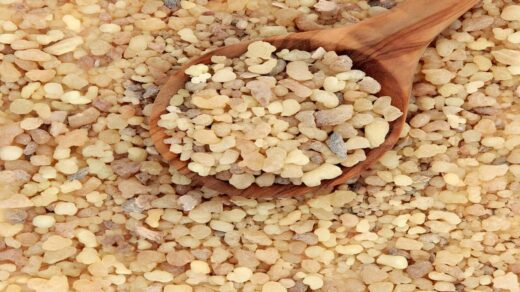Ayurvedic Medicine for Lowering Uric Acid and Treating Gout
Uric acid, a natural byproduct of the body’s metabolic processes, is essential for maintaining joint health. However, when uric acid levels soar, it can precipitate into sharp crystals, leading to painful conditions like gout. Left unchecked, high uric acid can also contribute to kidney stones and even cardiovascular problems.
Ayurveda, the ancient Indian system of medicine, offers a holistic approach to managing health conditions. By addressing the root cause of imbalances, Ayurveda provides a comprehensive strategy to control high uric acid levels. This article explores the wisdom of Ayurveda in managing this common health concern.
What is Uric Acid?
Uric acid is a waste product produced by the body when it breaks down substances called purines, which are found both naturally in the body and in certain foods. Normally, uric acid dissolves in the blood and is excreted through the kidneys in urine; however, high levels can lead to health issues like gout and kidney stones.
Causes of High Uric Acid Levels
Several factors can contribute to elevated uric acid levels:
- Diet: Consuming foods rich in purines, such as red meat, organ meats, seafood, and certain legumes, can increase uric acid production.
- Genetics: A family history of high uric acid or gout can increase your risk.
- Kidney function: Impaired kidney function can hinder the body’s ability to eliminate uric acid efficiently.
- Other medical conditions: Conditions like obesity, metabolic syndrome, and certain medications can also influence uric acid levels.
Health Implications Related to Uric Acid
High uric acid levels, a condition known as hyperuricemia, can lead to several health issues:
- Gout: Uric acid crystals can accumulate in the joints, causing painful inflammation, commonly known as gout.
- Kidney Stones: Uric acid can form stones in the kidneys, leading to severe pain and potential kidney damage.
- Cardiovascular Disease: Some studies suggest a link between high uric acid and an increased risk of heart disease and hypertension.
Understanding the causes and implications of high uric acid is crucial for preventing and managing this condition effectively.
Ayurvedic Perspective on Uric Acid Management
Ayurveda, the ancient Indian system of medicine, views health as a harmonious balance of three fundamental energies or doshas: Vata, Pitta, and Kapha. These doshas govern different bodily functions and when imbalanced, can lead to various health issues, including high uric acid.
- Vata: Governs movement, circulation, and nervous system.
- Pitta: Related to metabolism, digestion, and transformation.
- Kapha: Associated with structure, lubrication, and immunity.
Ayurveda emphasizes treating the individual as a whole, rather than focusing solely on the disease. By identifying the root cause of the imbalance and restoring equilibrium, Ayurveda aims to promote overall well-being.
Ayurvedic Diagnosis and Assessment for High Uric Acid
Ayurveda employs a holistic approach to diagnosis, considering the individual as a whole rather than isolating a specific symptom.
Here are some key diagnostic techniques used to assess high uric acid:
1. Pulse Diagnosis (Nadi Pariksha)
This is a cornerstone of Ayurvedic diagnosis. Practitioners assess the pulse at the wrist using three fingers, feeling for its rhythm, strength, and quality.
The pulse is believed to reflect the state of the doshas (Vata, Pitta, and Kapha) and can reveal imbalances related to uric acid. For instance, a strong, rapid pulse might indicate Pitta aggravation, often associated with inflammatory conditions like gout.
2. Tongue and Urine Analysis
- Tongue: The appearance of the tongue can provide valuable insights into overall health and digestion. A red, coated tongue might suggest Pitta imbalance, while a pale, moist tongue could indicate Kapha dominance.
- Urine: The color, odor, and clarity of urine can offer clues about kidney function and overall metabolic health.
3. Lifestyle and Dietary Assessment
A detailed understanding of a patient’s lifestyle and dietary habits is essential. Factors such as:
Eating habits:
- Consumption of red meat, seafood, and alcohol.
- Physical activity levels
- Stress management
- Sleep patterns
- Bowel movements
- Menstrual history (for women)
This information helps identify potential contributors to high uric acid and informs treatment recommendations.
By combining these diagnostic methods, Ayurvedic practitioners can accurately assess the root cause of high uric acid and develop a personalized treatment plan.
Role of Herbs in Ayurveda
Ayurvedic herbs are considered potent tools for balancing the doshas and addressing specific health concerns. These herbs have been used for centuries due to their therapeutic properties.
They work by supporting the body’s natural healing processes and promoting detoxification. In the case of high uric acid, certain herbs can help reduce inflammation, improve kidney function, and support overall metabolic health.
By addressing the underlying imbalances, these herbs can contribute to effective uric acid management.
Top 10 Ayurvedic Herbs for Managing High Uric Acid
Ayurvedic herbs offer natural remedies for managing high uric acid levels by supporting detoxification and reducing inflammation. These herbs help balance bodily functions and alleviate symptoms associated with conditions like gout and kidney stones.
1. Triphala
Triphala is a traditional Ayurvedic formulation composed of three fruits: Amalaki (Emblica officinalis), Bibhitaki (Terminalia bellirica), and Haritaki (Terminalia chebula). Each component is known for its unique therapeutic properties.
- Preparation: Typically prepared by drying and powdering the fruits, which are then combined in a specific ratio. It can be consumed in powdered form, as capsules, or as a decoction.
Benefits:
- Detoxification: Helps cleanse the digestive system and supports the elimination of toxins.
- Digestion Improvement: Enhances digestive functions and promotes regular bowel movements.
- Balancing Doshas: Aids in balancing the Vata, Pitta, and Kapha doshas, which is crucial for maintaining overall health and preventing imbalances that may contribute to high uric acid levels.
Usage:
- Recommended Forms: Powder, capsules, or liquid extracts.
- Dosages: Typically, 1-2 teaspoons of Triphala powder, taken once or twice daily with warm water. For capsules, follow the dosage instructions on the product label.
2. Guggul
Guggul comes from the resin of the Commiphora wightii tree. It has been used in Ayurveda for centuries.
- Preparation: The resin is harvested and processed into powder or tablets. It is often combined with other herbs in traditional formulations.
Benefits:
- Anti-inflammatory: Reduces inflammation, which can help manage gout symptoms.
- Uric Acid-Lowering: Aids in lowering uric acid levels and supports joint health.
Usage:
- Recommended Forms: Tablets, capsules, or powdered resin.
- Dosages: Typically, 250-500 mg of Guggul extract, is taken twice daily. Dosage may vary based on the specific formulation.
Punarnava (Boerhavia diffusa) is a herb known for its rejuvenating properties. It is traditionally used in Ayurvedic medicine.
- Traditional Use: Known for its diuretic and kidney-supportive properties.
Benefits:
- Diuretic Effects: Helps increase urine output, aiding in the elimination of excess uric acid.
- Kidney Function Support: Supports healthy kidney function, which is crucial for managing uric acid levels.
Usage:
- Recommended Forms: Powder, capsules, or as a decoction.
- Dosages: Typically, 1-2 teaspoons of Punarnava powder, taken once or twice daily, or as directed on product labels.
4. Aloe Vera
Aloe Vera is a succulent plant with well-known medicinal properties.
- Preparation: Gel from the leaves is used either fresh or processed into supplements and juices.
Benefits:
- Anti-inflammatory: Reduces inflammation and can help alleviate symptoms associated with high uric acid.
- Detoxifying: Supports detoxification processes in the body.
Usage:
- Recommended Forms: Fresh gel, juice, or capsules.
- Dosages: 1-2 tablespoons of Aloe Vera juice daily or follow dosage instructions for capsules.
5. Celery Seed
Celery seeds come from the plant Apium graveolens and are known for their medicinal
Properties.
- Preparation: Seeds are usually used in powdered form or as extracts.
Benefits:
- Anti-inflammatory Effects: Reduces inflammation and supports uric acid metabolism.
- Support for Uric Acid Metabolism: Helps in managing uric acid levels through its diuretic properties.
Usage:
- Recommended Forms: Powder or extract.
- Dosages: Typically, 500 mg of Celery Seed extract, is taken 1-2 times daily.
6. Ginger
Ginger (Zingiber officinale) is a widely used spice and medicinal herb.
- Preparation: Fresh or dried root is used in cooking or as a supplement.
Benefits:
- Anti-inflammatory: Helps reduce inflammation, beneficial for managing gout symptoms.
- Digestive Aid: Improves digestion and supports overall digestive health.
Usage:
- Recommended Forms: Fresh, dried powder, or supplements.
- Dosages: 1-2 grams of ginger powder daily, or follow the product label for supplements.
7. Turmeric
Turmeric (Curcuma longa) is a spice with a long history of use in Ayurvedic medicine.
- Preparation: The root is dried and powdered, or used as a fresh paste.
Benefits:
- Anti-inflammatory: Contains curcumin, which has strong anti-inflammatory properties.
- Antioxidant Effects: Helps combat oxidative stress and supports overall health.
Usage:
- Recommended Forms: Powder, capsules, or fresh root.
- Dosages: 500-1000 mg of turmeric extract daily, or 1-2 teaspoons of turmeric powder in cooking.
8. Neem
Neem (Azadirachta indica) is a tree known for its potent medicinal properties.
- Traditional Use: Used for its detoxifying and anti-inflammatory effects.
Benefits:
- Detoxifying: Aids in detoxification and supports the body’s natural cleansing processes.
- Anti-inflammatory: Helps reduce inflammation, which is beneficial for managing high uric acid.
Usage:
- Recommended Forms: Powder, capsules, or extracts.
- Dosages: Typically, 1-2 grams of Neem powder daily or as directed on product labels.
9. Ashwagandha
Ashwagandha (Withania somnifera) is an adaptogenic herb used in Ayurvedic medicine.
- Preparation: Root powder or extracts are commonly used.
Benefits:
- Stress Reduction: Helps manage stress, which can indirectly support overall health and balance uric acid levels.
- Overall Wellness Support: Contributes to general well-being and vitality.
Usage:
- Recommended Forms: Powder, capsules, or tinctures.
- Dosages: 300-600 mg of ashwagandha extract daily or as directed.
10. Brahmi
Brahmi (Bacopa monnieri) is a herb known for its cognitive and stress-relief properties.
- Traditional Use: Used to enhance mental clarity and reduce stress.
Benefits:
- Cognitive Support: Supports mental clarity and cognitive function.
- Stress Relief: Helps manage stress, which can affect overall health.
Usage:
- Recommended Forms: Powder, capsules, or tinctures.
- Dosages: 300-500 mg of Brahmi extract daily or as directed.
List Of Ayurvedic Medicine Names for Uric Acid
Ayurvedic capsules to help manage uric acid levels, here are some popular options:
- Goutnil Capsules – Often recommended for managing symptoms of gout and high uric acid, Goutnil contains a blend of herbs that aim to reduce inflammation and uric acid levels.
- Uric Acid Formula by Planet Ayurveda – This product is formulated to support healthy uric acid levels and includes herbs such as Triphala, Punarnava, and Guggul.
- Himalaya’s Gout Care – This supplement is designed to support joint health and reduce uric acid levels, featuring ingredients like Guduchi, Chitrak, and Haritaki.
- Ayurvedic Uric Acid Care by Nature’s Way – This capsule combines traditional herbs like Turmeric, Ginger, and Giloy to help maintain normal uric acid levels and support overall joint health.
- Kerala Ayurveda’s Arthcare Capsules – Aimed at reducing inflammation and supporting joint health, these capsules include a range of herbs beneficial for managing uric acid levels.
Always consult with a healthcare provider or an Ayurvedic practitioner before starting any new supplement, especially if you have underlying health conditions or are taking other medications. They can provide personalized recommendations based on your specific needs.
Ayurvedic Treatment & Dietary Recommendations
Ayurveda emphasizes dietary modifications as a cornerstone of managing high uric acid. The goal is to reduce inflammation, support kidney function, and maintain overall balance.
Foods to Include:
- Anti-inflammatory Foods: These foods help reduce inflammation, a key factor in uric acid-related conditions.
- Turmeric: Contains curcumin, with potent anti-inflammatory properties.
- Ginger: Aids digestion and has anti-inflammatory effects.
- Garlic: Possesses anti-inflammatory and antioxidant properties.
- Alkalizing Foods: These foods help balance the body’s pH levels and may assist in uric acid management.
- Leafy greens: Rich in vitamins, minerals, and antioxidants.
- Cucumbers: Hydrating and alkalizing.
- Melons: Provide hydration and essential nutrients.
Foods to Avoid:
- High Purine Foods: Limiting these can help reduce uric acid production.
- Red meats: Rich in purines.
- Organ meats: High in purine content.
- Seafood: Some types, like shellfish, are high in purines.
- Refined Sugars and Alcohol: These can contribute to inflammation and other health issues that may exacerbate uric acid levels.
Note: While these general guidelines are helpful, it’s essential to consider individual variations and consult with an Ayurvedic practitioner for personalized dietary advice.
Incorporating these Ayurvedic herbs into your routine can help manage high uric acid levels effectively, promoting overall well-being and reducing the risk of associated health issues.

























